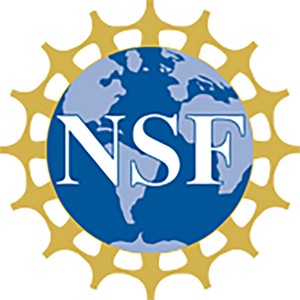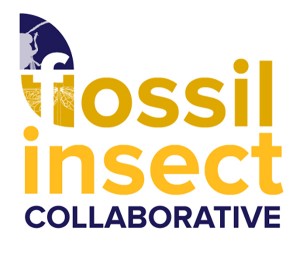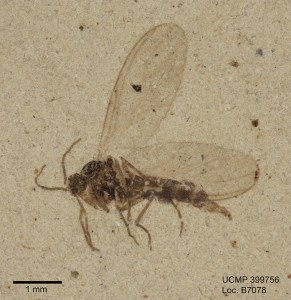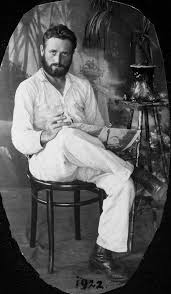
Thanks to a two-year collections digitization grant awarded to the University of California Museum of Paleontology (UCMP) by the National Science Foundation’s, “Advancing the Digitization of Biological Collections (ADBC)” program, UC Berkeley joined the Fossil Insect Collaborative Thematic Collections Network (FIC) as a “Partner to an Existing Network (PEN)” in the summer of 2015.

The FIC is a consortium of seven institutions that house the largest fossil insect collections in the country. Members include the University of Colorado (Boulder), American Museum of Natural History, Harvard, Yale, University of Kansas, Illinois Natural History Survey (University of Illinois Urbana-Champaign), and the Virginia Museum of Natural History. The specimen data and images generated by these institutions go to the iDigBio, GBIF, iDigPaleo and EOL web portals for online access by anyone. The BFIP data is also accessible through the UCMP and Calphotos online databases.
The BFIP project is contributing specimen data and images of its smaller, yet significant collections of insects preserved in amber from Mexico, those from the Rancho La Brea and McKittrick tar pits of southern California, and the thousands buried 14.5 million years ago in an ancient Nevada lake bed. Although the main task of the BFIP is to provide fossil insect data and images, one our BFIP team members, Dr. Marwa Wafeeq El-Faramawi became intrigued with the amber collection archives. Now one year into the project Dr. El-Faramawi has scanned the contents of nearly all 85 folders.

The amber archive files are one of the PEN project resources that we first targeted in the hope of finding clues on where some (or all) of the missing amber specimens are in order to track them down and, if lucky enough, get them back. However, going through the files (85 folders) made us realize just how important and probably highly overlooked these documents are. Basically speaking they contain all official correspondences concerning the amber and related research that Berkeley professors had with their peers all over the country and the world. They also revealed most of the specimen’s shipping details and receipts (going back and forth), in addition to drafts and manuscripts that the professors exchanged by snail mail in the old days. As official as they may seem, they definitely revealed more than that. These documents –if you read them right- tell so many stories; stories about the social / friendly or sometimes unfriendly side of the relationship between the professors and in some cases their families. Stories about the history of research in Berkeley and how it was done back then; and it may even tell you stories about the history of mail service at these times. These are the last century’s text messages and being able to view them is a one of a kind time-machine experience.

Given that most of the museum’s amber collection comes from Chiapas, Mexico, one of the most interesting folders is number 19, the Frans Blom folder, which includes his correspondences, photos, and postcards from 1952-1962. Frans Blom, also known as Pancho (as he used to sign his letters and postcards), is a highly renowned figure in the world of archaeology and the study of the Mayan civilization in Mexico and Guatemala. The great Danish archeologist and his wife the Swiss photographer Gertude Duby (Trudi) used to supply UC Berkeley Department of Entomology’s professors Paul D. Hurd, Jr. and Ray F. Smith and UCMP’s J. Wyatt Durham with amber materials and host them in their house, the “Casa Na Bolom” or “the house of the jaguar,” during their amber collecting expeditions in Mexico. The house still existed under the management of his wife Trudi and served as a center for scholars researching Chiapas and Guatemala even after Blom died in 1963. It now serves as a museum, hotel and restaurant. His correspondence goes beyond the official in revealing his hospitality, high sense of humor and sturdy, determinate, courageous self, it also gives details about the expedition made by the UC-Berkeley research team and its before and after arrangements and complications. Frans Blom led an adventurous life that was documented in many articles and books. For more information about the great man it is definitely worth mentioning that the Bancroft Library has an invaluable genuine collection of Frans Blom’s personal and professional history that includes eleven boxes of his papers, diaries, correspondences and more from 1919 to 1942. All these items can be accessed by request for research purposes.
Follow us at weDIGBugs2 on Twitter and Instagram and the UC Museum of Paleontology Facebook page for posts relating to BFIP activities.